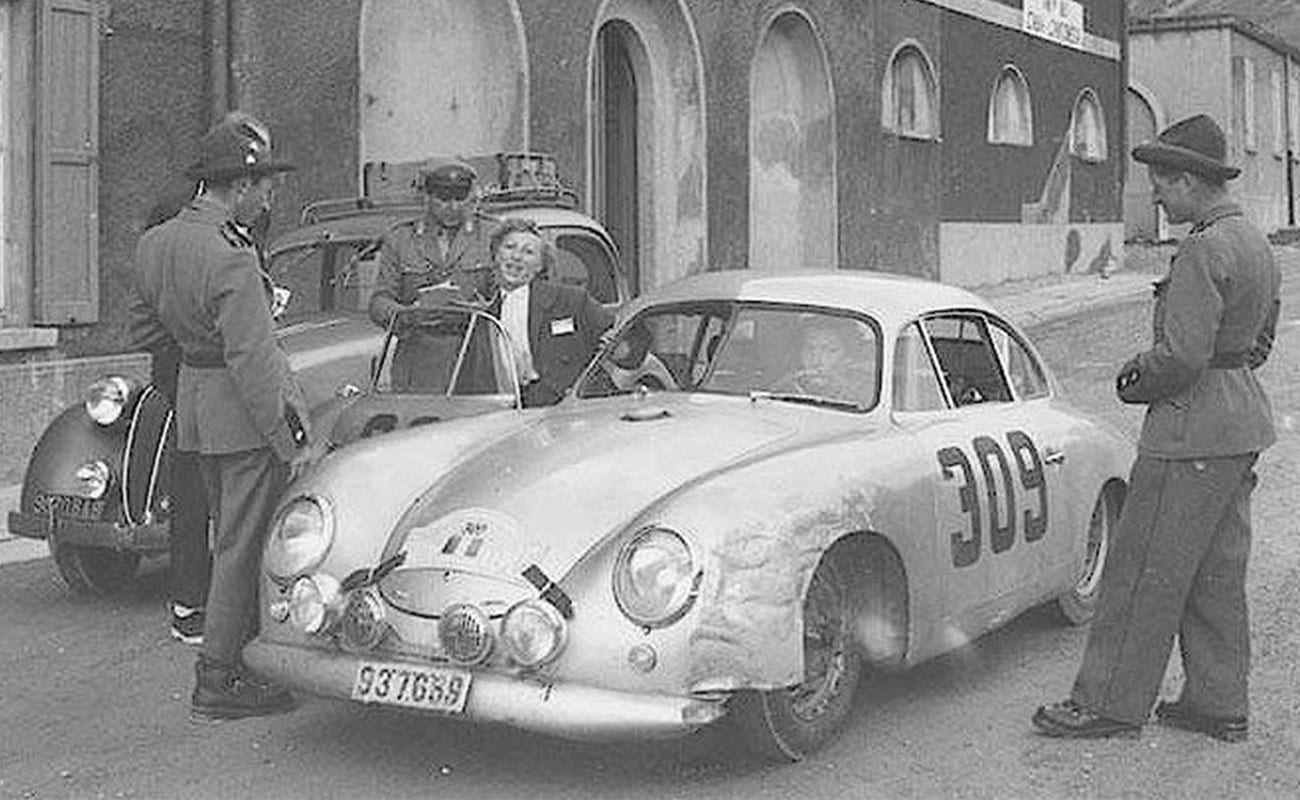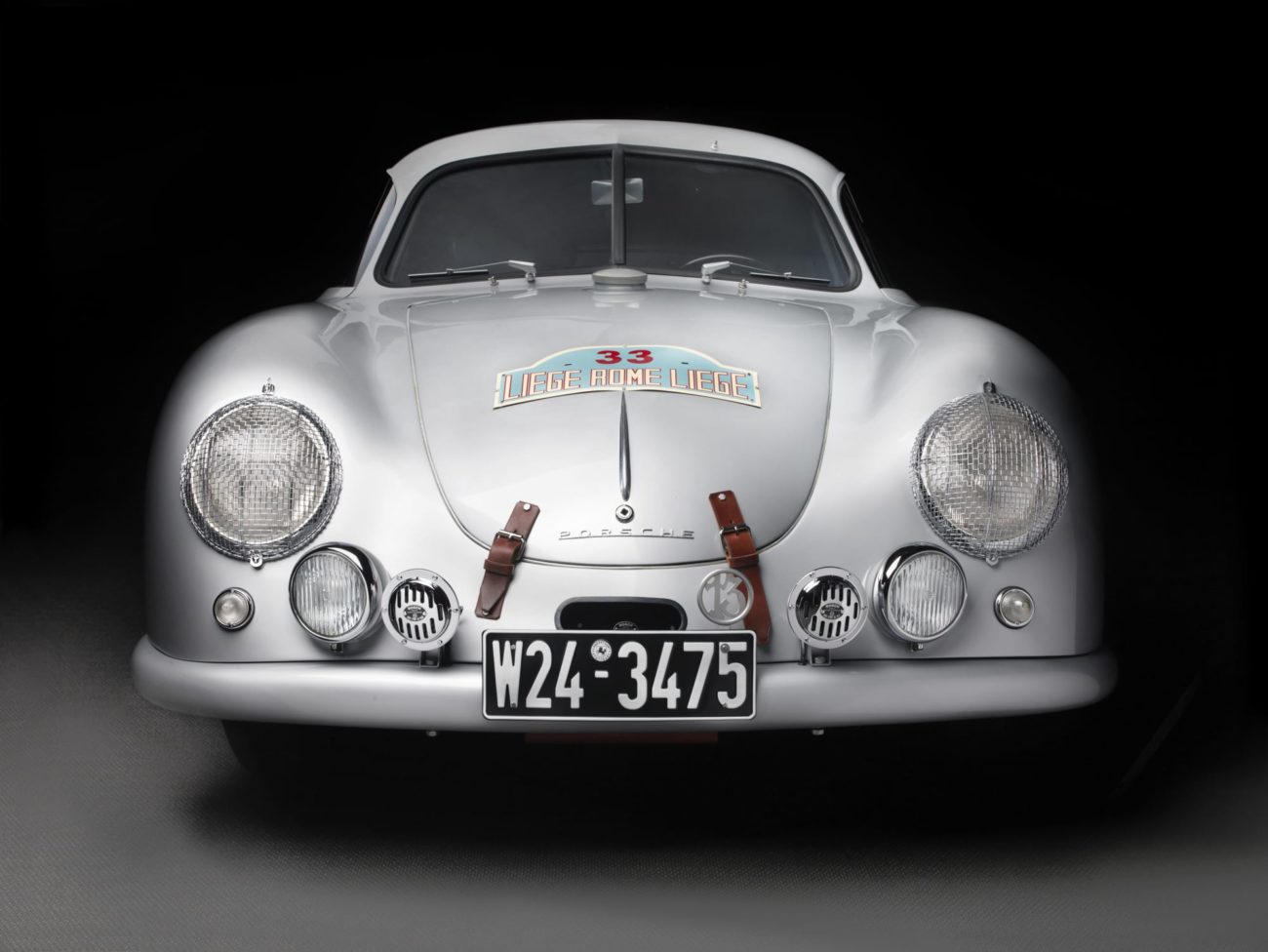Tech Specs
Flat-four, air-cooled pushrod VW-type engine, rear-mounted, Porsche –designed cylinder heads, 1498 cc, 72 hp at 5000 rpm.
Before/After
1951 Porsche


About the 1951 Porsche 356SL Gmünd
During World War II, Porsche relocated its factories from heavily bombed Stuttgart to the town of Gmünd, Austria. Under the watchful eye of his father, Ferdinand, Ferry Porsche designed project 356 (the number was from the design sequence that started when Porsche opened his independent design studio in Stuttgart in 1931) and the Gmünd coupes were hand-hammered out of sheet aluminum over wooden bucks. Approximately fifty 356 Gmünd coupes were built in 1949.
In 1950, eleven remaining Gmund chassis were assembled after the factory returned to Germany and converted to SL (Sport Leicht) racing specification. Renumbered as 356/2 3000 series cars, they received 1,086-cc engines, enlarged fuel tanks, louvered quarter-window covers, wheel spats, streamlined aluminum belly fairings, and a pedestal-mounted shifter. Three Type 356/2 cars raced at Le Mans in 1951; two crashed, but 356/2-063 performed flawlessly, winning the 1,100-cc class.
This example, 356/2-055, raced in the grueling 1951 2,932-mile Liège-Rome-Liège Rally. Powered by an experimental 1,488-cc engine, it finished third overall and won its class. Afterward, it set eleven world speed and endurance records on the Montlhéry circuit near Paris, averaging 94.66 mph for 72 hours – an amazing feat after gearbox gremlins left it with only third gear in late running. Bug- and oil-streaked, 055 was rushed into Paris for display at the International Auto Show.
In late 1951, 055 was one of several SLs shipped to the United States, where they were sold to private owners and raced extensively. Miles Collier acquired this SL in 1986 and has restored it to its Liège-Rome-Liège configuration. It is easily convertible to its Montlhéry form.









